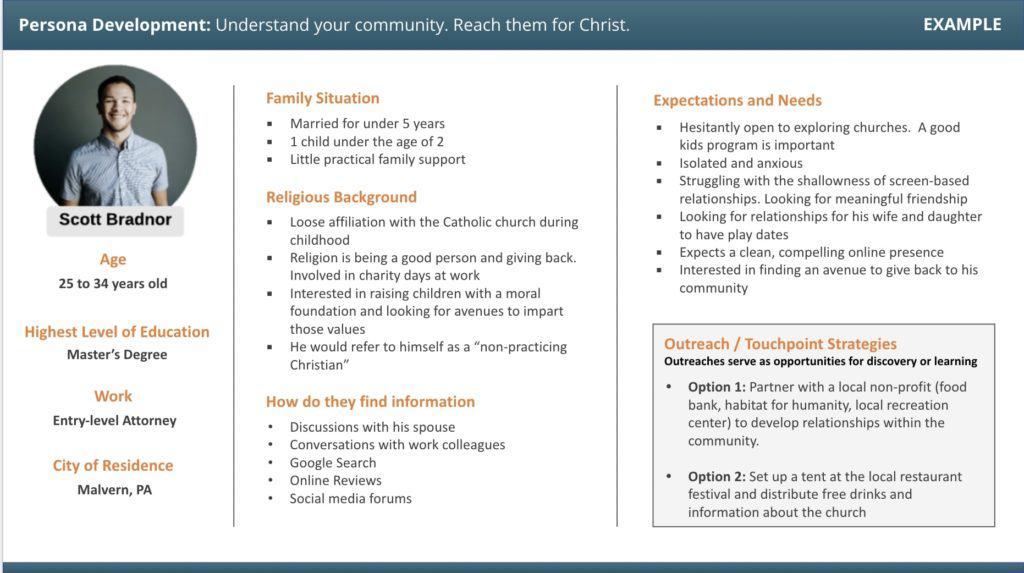Thinking about the most effective way to reach your local community can be hard. What’s ironic is that we’re made to do life with others, to join together in community. Yet we can drive past neighbors we haven’t spoken with in years. We seclude ourselves in our air-conditioned/well-heated homes. We drive to our churches through neighborhoods we’ve never visited. As a result, we often don’t know the community around us. Could that be why more than 30% fewer people are attending church now when compared to 30 years ago ? Is it possible that this be a major contributing factor why we’re not seeing the church growth for which we’ve been accustomed? If so, where are these unknown neighbors finding their community?
For better or for worse (often for worse), people increasingly create their own community. They either find organizations that interest them or they develop connections online, cultivating a virtual community where they feel known, understood, and affirmed. And that often does not include a place for God. They do not pursue church attendance. They no longer see the relevance.
What would happen if your church knew and understood them? What would happen if your church took the time to study your community, develop careful profiles for who lives within your community, and then cultivated outreaches that met people where they are and for who they are? Doing so would allow you to reach your local community, connect with people in meaningful ways, demonstrate the relevance of the church and the gospel in their lives, and unlock the ability to grow your church.
You can effectively reach your community, provide services and care, and build the bridges necessary to get people from their front doors to your church doors. Thirty percent fewer people may be attending church nationwide, but your community will defy that statistic by consistently drawing your community in. One of the important bridge-building tools in your toolkit to accomplish this is persona development. In this article, we’ll provide an in-depth explanation of what a Persona is and why it’s important, give you the core tenets of building a powerful Persona, provide four tangible benefits of utilizing Personas to reach your community, and give you an example to help you build your own.
What is a Persona?
Simply put, a persona is a created character who represents a demographic or group of people in your community. It represents who you want to reach. When you develop community outreach events, or other impactful ways to reach your local community, a persona provides a specific target audience to keep in view and plan for.
In one sense, all churches are looking to connect with the same persona: the unbeliever. But that is too broad to be useful. Differences in personas lead to very different outreach strategies. For example, should your outreach be focused on educated, young professionals who are skeptical about christianity, or on a young family who are open to christianity and looking to impart moral values into their preschooler?
Then, once you decide who you should reach, a well-developed persona helps you plan how to reach those community members. This will instruct you on which ministries will be effective and which ideas might not work well in reaching your community.
To draw a recognizable parallel, the same sermon may be preached quite differently depending upon the makeup of the congregation. To one congregation, it may be quite lively. To another, it may need to be more sedate. You may need many illustrations for one group while a different one may need more work in the original languages. Each sermon contains the same truth. However, the methods on how best to minister to that congregation may vary greatly.
Personas, then, equip you to reach the specific people within the 4-8 miles of your church. Depending on the makeup of your community, demographics among churches can vary greatly even if the churches share all doctrinal convictions in common. Bottom line: if our outreaches are going to be effective and our churches are going to grow, we must develop several personas as the foundation of our planning.
Core Tenants of a Good Persona
A good persona is built with great intentionality. Since these are going to be a key feature in how you reach your local community, personas must be well developed to withstand the weight you’ll place on them. How can you avoid building unhelpful personas? How can you be sure the work you put into developing personas will maximize your outreach efforts and church growth? Follow these four guidelines:
1. Build with Real Data
A good persona contains real data (our recommendation here is that most real data should be gathered not just by reviewing data, but also by actually talking with your congregation and community. It’s important to interact versus building a persona solely off 3rd party data. That can sometimes lead to stereotypes or unreliable information). It includes items such as age, education, work, religious background, etc. When a persona includes guesswork and generalities, you can expect meager results. Remember, you’re not trying to reach a general audience or some nondescript community. You’re trying to reach the audience in a 4-8 mile radius surrounding your church. You’re trying to reach your community. To do that, you must use real data.
Study your community. Ask questions about your community that will narrow what you’re aiming for. Where do they spend most of their time? What matters most to them? Where do they spend their money? Do they work close to home or is it a commuting community? How long do they tend to live in your community? How do they find their information? What are their greatest needs? What causes them anxiety?
Ascertaining the answers to specific questions like these will help you hone in on your community. But it will do more; it will inform how you reach them.
2. Understand the Demographics
A good persona considers background. You cannot fully understand a person simply by knowing their background, but it sure helps!
As you develop your personas, consider characteristics such as the age of your community members. Which age groups comprise the majority of your community? What is their educational background? How far have they gone in their schooling? What types of work do they do? What is the average income level?
Once you’ve answered those questions, consider categories such as their family situation. Are they married? Do they have kids? What is the predominant religious background? How do they tend to interact with the idea of God or with his Word?
These questions teach you about the type of people God has placed around you. And they define your most important ministry targets as you consider how to best reach your local community.
3. Limit the Number of Personas You Develop
With the answers to those many questions, you begin to see your community form right before your eyes. Unless you find yourself in a specific type of community, such as a college town or a retirement center, you will need to develop more than one persona to capture all of the data you uncover. Don’t allow yourself to be overwhelmed. If you limit yourself to three or four personas, you will start to capture your community while still making your outreach task manageable.
Too many personas will spread your volunteer and financial resources thin, not to mention your creative resources. Naturally, you can do more than three or four, but start by limiting yourself so you can focus and maximize your efforts.
4. Test for Accuracy
After applying these guidelines and thoroughly developing your personas, you must put them to the test. Create your outreach plan.
As you employ your plan, keep your eyes and ears open. You will learn how successful your personas are as you see the results. If it hasn’t worked very well, it doesn’t mean you’ve failed. You’ve simply learned that your persona was not specific enough, or even perhaps was off the mark.
That’s okay. Employ. Observe. Measure. Make adjustments. Repeat. Go back and tweak your personas, allowing what you learn to shape the changes you make. In short order, you will find a well honed persona at your disposal. Once you have one of those, you have a flexible focal point to be used in many ways as you seek to reach your community.
An Example of a Good Persona

Notice how this one slide captures the categories you need to build a persona. Notice also how the bullets seek to answer those pivotal questions you’ll need for your personas to serve their purpose. Study this persona and you’ll discover how all of the questions we’ve asked come together to provide the focus and specificity needed to reach the Scott Bradnors around you.
You may not have any Scott Bradnors in your community, per se. That’s fine. At the end of this article, we’ll provide you a template with the photo, name, and details all cleared out. That way, you can use Scott as a guide to build your own personas for your church and strategies to reach your local community.
Benefits of a Good Persona
Messaging – A good persona focuses your messaging. It instructs you in the language to use by knowing what felt needs must be addressed. It also instructs you on the method of your messaging. Knowing the personas of your community will inform you whether you need postcards, Google advertising, custom yard signs, SEO optimization, or some combination of those tactics. Personas focus your messaging.
Ministry – A good persona focuses your ministry. A community potluck may work for some personas while a discussion on controversial topics may work for another. Your persona can help you choose between an Easter Egg Hunt or an apologetics outreach. Without a persona, you’re either shooting in the dark or going by the pastor or evangelist’s preferences. Personas focus your ministry.
Money – A good persona focuses your use of money. Our people give generously to God’s work, so we want to spend their giving wisely. And we ought not presume that a broad spending of money will result in broad results. In fact the opposite is true. Focused spending brings the greatest and most effective results. Your personas will make your investment in messaging and ministry self-evident, resulting in a better use of the financial resources under your care. Personas focus your use of money.
Now It’s Your Turn to Build A Persona
You’ve learned what a persona is and the key elements of a good one. You’ve learned the benefits of a good persona and you’ve seen a well-developed sample. Now it’s your turn. Simply follow these four steps.
Converse with Church Members – Talk with people from different backgrounds in your church. Be sure to talk with men and women, young and old. Speak with people of different races and socio-economic statuses. Ask them the many questions we’ve provided throughout this article. Collect their answers and regather again with your core team to discuss.
Fill Out the Included template for Your Top Three Personas – Now, put your work to work. Compile the answers you’ve collected and answer the questions for those top three personas. Then, select the one that seems strongest and clearest and plan an outreach to connect with those who fit that persona. For extra credit, combine your persona and outreach efforts with a visitor journey map, and connect powerfully with your community in a way that also keeps them coming back.
Let Digital Outreach Help – Digital Outreach is uniquely equipped to help churches reach these goals. Through the experience we’ve accumulated, we have a battery of online tools and information to help you answer these questions as well as methods on reaching your community.
Many churches have the right heart to reach the lost, and authentic desire to see their church grow with members as they powerfully reach their local community; but they do it without the most helpful tools. Personas can be that foundational tool in your belt that focuses all of your outreach efforts. And Digital Outreach can be your partner in doing it.






